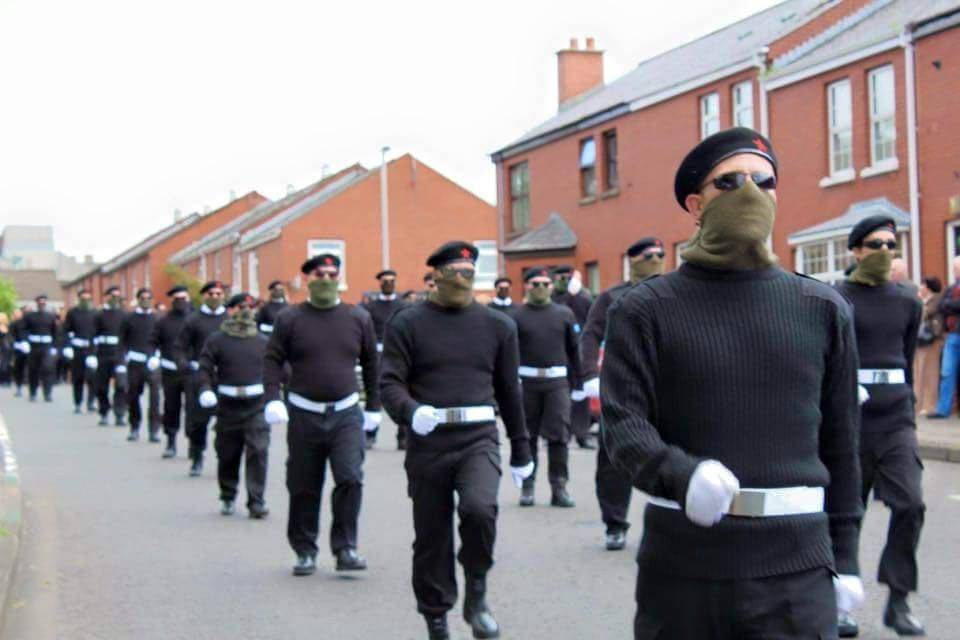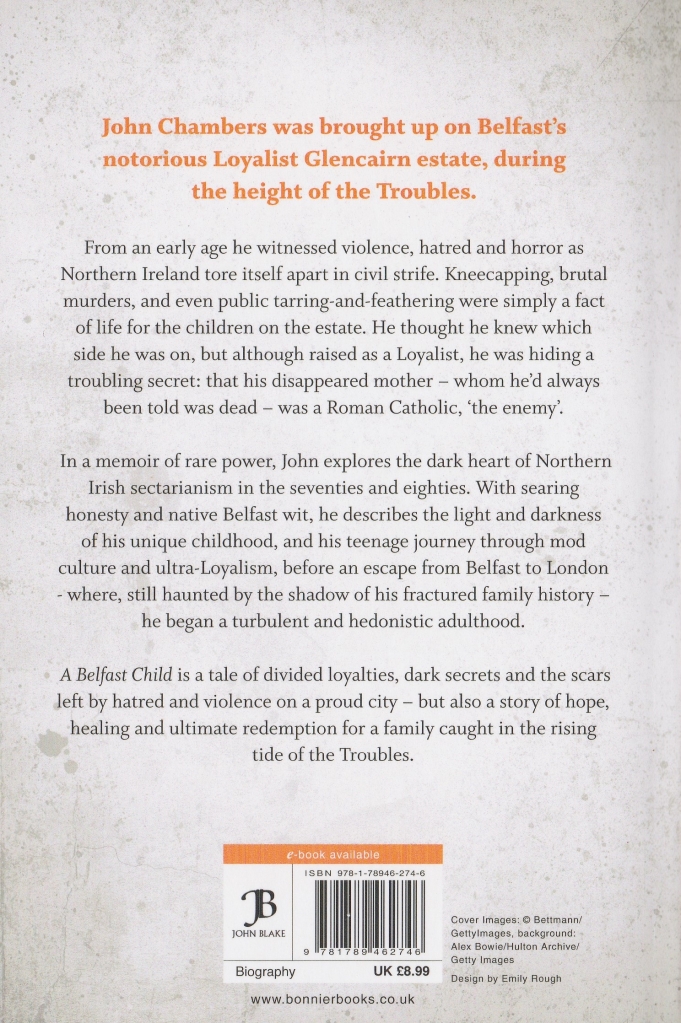Key Events & Deaths on this day in Northern Ireland Troubles
12th December
Thursday 12 December 1968
Terence O’Neill , then Northern Ireland Prime Minister, received overwhelming support from Unionist Members of Parliament (MPs) at Stormont.
Sunday 12 December 1971

John (Jack) Barnhill, then a Ulster Unionist Party (UUP) member of the Northern Ireland Senate, was shot dead by the Official Irish Republican Army (OIRA) at his home in Strabane. He was the first politician to be killed in the conflict.
Sunday 12 December 1976
The Ulster Loyalist Central Co-ordinating Committee (ULCCC) claimed that some loyalist politicians had been involved in the past in the arrangements to purchase arms and explosives, and in choosing potential bomb targets.
Monday 12 December 1977

Colin McNutt (18), a member of the Irish National Liberation Army (INLA), was shot dead by undercover British Army soldiers at the junction of William Street and Little James Street, Derry. [It was claimed that the soldiers were members of the Special Air Service (SAS).]
Tuesday 12 December 1978
Four people were injured by parcel bombs in Belfast and Lisburn. Three of those injured were the wives of prison officers and the fourth was a postman
Wednesday 12 December 1979
In a number of cities across Britain 24 people were arrested on suspicion of being members of the Irish Republican Army (IRA). This was an attempt to disrupt an anticipated bombing campaign.
Friday 12 December 1980

Six members of the Ulster Defence Association (UDA) in the Maze prison start a hunger strike in support of their demand for segregation from Republican prisoners.
[This Loyalist hunger strike was called off on 17 December 1980.]
Sunday 12 December 1982


‘Shoot to Kill’ Allegation Rodney Carroll (22) and Seamus Grew (31), both members of the Irish National Liberation Army (INLA), were shot dead by an undercover unit of the Royal Ulster Constabulary (RUC) at a Vehicle Check Point (VCP) in Mullacreavie, County Armagh.
[This became the third incident where allegations were made that the security forces were operating a ‘shoot to kill’ policy.]
Monday 12 December 1983
The Political Committee of the European Parliament held the first of a series of meetings to consider its draft report on Northern Ireland. The Rapporteur was Mr N.J. Haagerup and the report called for power-sharing and the preparation of a plan by the (then) European Economic Community (EEC) to aid the economic development of Northern Ireland.
[The Committee had been asked to prepare the report on 23 February 1983. The report was passed by the European Parliament on 29 March 1984.]
Wednesday 12 December 1990
An attempt by the Workers’ Party (WP) to begin a process of amending Articles 2 and 3 of the Irish Constitution is defeated in the Dáil.
Thursday 12 December 1991
The Irish Republican Army (IRA) exploded a bomb, estimated at 2,000 pounds, outside a police station in Craigavon, County Armagh. Nearby buildings were also damaged in the attack.
Sunday 12 December 1993

Two Royal Ulster Constabulary (RUC) officers were shot dead by the Irish Republican Army (IRA). The two officers were travelling in an unmarked car in Main Street, Fivemiletown, County Tyrone.
Monday 12 December 1994

Albert Reynolds, then acting Taoiseach (Irish Prime Minister), said that it was not a “sensible precondition” to require the Irish Republican Army (IRA) to had over weapons before the commencement of multilateral talks.
Saturday 12 December 1998

There were disturbances during an Apprentice Boys march in Derry. David Trimble, then First Minister designate, said the decommissioning of paramilitary weapons would have to be carried out in front of television cameras so that ordinary people could believe it had taken place.
The Labour Party and Democratic Left voted at separate delegate conferences in Dublin to merge the two parties. The former endorsed it overwhelmingly by a show of hands, and the latter in a secret ballot by 171 votes to 21.
Tuesday 12 December 2000
Clinton Visit to Ireland Bill Clinton, the President of the United States of America (USA), arrived in Ireland for his third visit as President. Bill Clinton was accompanied by the First Lady Hillary Clinton. The first part of the visit included Dublin and Dundalk [Bill and Hillary Clinton then travelled to Northern Ireland.] While in Dublin Hillary Clinton held a reception for 40 women involved in Irish political life at the American ambassador’s residence.
Wednesday 12 December 2001

Loyalists Kill William Stobie and Ombudsman’s Report on Omagh William Stobie (51) was shot dead by Loyalist paramilitaries as he left his home, at approximately 6.15am (0615GMT), in Forthriver Road, in the Glencairn area of Belfast. Stobie was a self-confessed former Ulster Defence Association (UDA) quartermaster and a Loyalist police agent. The Ulster Freedom Fighters (UFF), a cover name (pseudonym) used by the UDA, claimed responsibility, however some nationalists alleged that there had been security force collusion in the killing.
[Stobie had been accused of aiding and abetting in the murder of Pat Finucane, a Belfast solicitor killed on 12 February 1989, but the case against him collapsed on 26 November 2001.]
Derek Lenehan (27), originally from Dublin and a member of the Irish National Liberation Army (INLA), died several hours after being found shot in the legs, by the side of New Road, near Forkhill, County Armagh. It was believed that he had been shot by the INLA as a result of an internal INLA dispute.

Nuala O’Loan, then Police Ombudsman for Northern Ireland (PONI), met the relatives of the victims of the Omagh bombing (15 August 1998) and presented them with the findings and recommendations of her report into the bombing and the handling of the subsequent police investigation. The report found that there had been two non-specific warnings given to police prior to the bombing.
One telephone warning about a planned attack in Omagh on 15 August 1998 was received on 4 August 1998, but Special Branch officers took the decision not to pass on the information to the local police commander in Omagh. A second warning given three days before the bombing by “Kevin Fulton” (a pseudonym), then a police agent, did not mention the town of Omagh. The report states that had the information been passed on and security checkpoints been put in place, the bombers may have been deterred.
The report also accused Ronnie Flanagan, then Chief Constable of the Police Service of Northern Ireland (PSNI), of flawed judgement and of damaging the chances of arresting those suspected of being responsible for the Omagh bomb. The report also recommended that, “an independent senior investigative officer from outside Northern Ireland be appointed to conduct the investigation and that that investigation be properly resourced and it be given access to all material.
” [O’Loan had decided to publish the findings of the report when Flanagan failed to respond to the draft report by the deadline.]
Immediately after the release of the findings Ronnie Flanagan gave a press conference in Belfast at which he threatened to begin legal action on a “personal and organisational basis” to have the report withdrawn. He claimed the report was full of “wide and sweeping conclusions” and was unfair. He also said that if the conclusions were true he would publicly commit suicide.
[Flanaghan later withdrew the remarks about suicide. O’Loan later responded and said that the findings of the report were based on facts and were carefully established.]
The Northern Ireland Policing Board (NIPB) agreed a new emblem for the Police Service of Northern Ireland (PSNI). The British government had published seven draft emblems on 19 November 2001 but they were all rejected by Unionist members of the Board.
[The NIPB recommendation required final approval before being adopted.]

The Equality Commission held a conference in Belfast to examine ways of improving the law on equality in Northern Ireland. The Commission wanted to discuss ways of bringing together all the current equality laws.
———————————-
———————————————————————————
Remembering all innocent victims of the Troubles
Today is the anniversary of the death of the following people killed as a results of the conflict in Northern Ireland
“To live in hearts we leave behind is not to die
– Thomas Campbell
To the innocent on the list – Your memory will live forever
– To the Paramilitaries –
There are many things worth living for, a few things worth dying for, but nothing worth killing for.
11 people lost their lives on the 12th December between 1971 -2001
————————————————————
12 December 1971
John Barnhill, (65)
Protestant
Status: Civilian Political Activist (CivPA),
Killed by: Official Irish Republican Army (OIRA)
Ulster Unionist Stormont Senator. Shot during bomb attack on his home, Brickfield House, near Strabane, County Tyrone.
————————————————————

12 December 1977
Colm McNutt, (18)
Catholic
Status: Irish National Liberation Army (INLA),
Killed by: British Army (BA)
Shot by undercover British Army (BA) member at car park, junction of William Street and Little James Street, Derry.
————————————————————
12 December 1982

Seamus Grew, (31)
Catholic
Status: Irish National Liberation Army (INLA),
Killed by: Royal Ulster Constabulary (RUC)
Shot by undercover Royal Ulster Constabulary (RUC) members at Vehicle Check Point (VCP), Mullacreevie Park, Armagh.
————————————————————
12 December 1982

Rodney Carroll, (22)
Catholic
Status: Irish National Liberation Army (INLA),
Killed by: Royal Ulster Constabulary (RUC)
Shot by undercover Royal Ulster Constabulary (RUC) members at Vehicle Check Point (VCP), Mullacreevie Park, Armagh.
————————————————————
12 December 1983

Anthony Dawson, (18)
Catholic
Status: Civilian (Civ),
Killed by: Royal Ulster Constabulary (RUC)
Shot by off duty Royal Ulster Constabulary (RUC) member from passing car while standing in Mountpottinger Road, Short Strand, Belfast.
————————————————————
12 December 1983

John Molloy, (20)
Protestant
Status: Civilian (Civ),
Killed by: non-specific Loyalist group (LOY)
Shot at his home, Tyndale Gardens, Ballysillan, Belfast.
————————————————————
12 December 1986
Desmond Caldwell, (44)
Protestant
Status: Civilian (Civ),
Killed by: Irish Republican Army (IRA)
Killed by booby trap bomb attached to cab of lorry, at his workplace, Killen, near Castlederg, County Tyrone. Mistaken for off duty Royal Ulster Constabulary (RUC) reservist.
————————————————————
12 December 1993

Andrew Beacom, (46)
Protestant
Status: Royal Ulster Constabulary (RUC),
Killed by: Irish Republican Army (IRA)
Shot while travelling in Royal Ulster Constabulary (RUC) civilian-type car, Main Street, Fivemiletown, County Tyrone.
————————————————————
12 December 1993

Ernest Smith, (49)
Protestant
Status: Royal Ulster Constabulary (RUC),
Killed by: Irish Republican Army (IRA)
Shot while travelling in Royal Ulster Constabulary (RUC) civilian-type car, Main Street, Fivemiletown, County Tyrone.
————————————————————
12 December 2001

William Stobie, (51)
Protestant
Status: ex-Ulster Defence Association (xUDA),
Killed by: Red Hand Defenders (RHD)
Shot outside his home, Forthriver Road, Glencairn, Belfast. Alleged informer.
————————————————————
12 December 2001
Derek Lenehan, (27)
nfNI
Status: Civilian (Civ),
Killed by: Irish National Liberation Army (INLA)
From Dublin. Died several hours after being found shot in the legs, by the side of New Road, near Forkhill, County Armagh.
————————————————————
Who wants… A signed copy of my No.1 best selling book ? Makes a great Xmas gift for book lovers & those interested in the Troubles & the crazy, mad days my generation lived through.



Click here to order : https://tinyurl.com/2p9b958v
UK orders only – if you live outside the UK email me belfastchildis@googlemail.com and Ill send you a link for ordering outside the UK.

